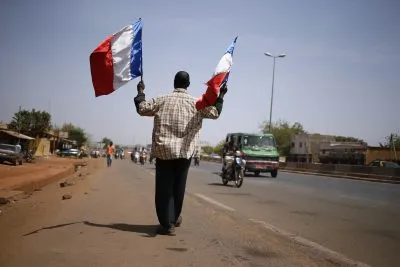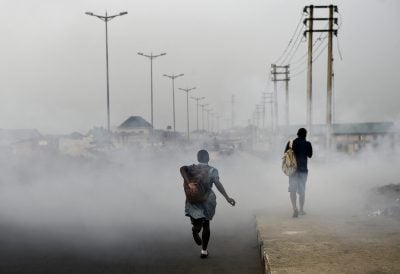The African Development Bank (AfDB) believes that Africa is over the worst of the economic downturn. As a big lender to African projects, it is obviously in the Bank’s best interests to talk up the continent’s economic prospects.
Sustained low commodity prices have depressed growth, while rising public debt has inflated borrowing costs over the past five years. The green shoots of a recovery may be visible in some places but it seems too soon to suggest that it is the beginning of the end of what has been a difficult economic period for most of the continent.
Speaking to Bloomberg in late September, AfDB president Akinwumi Adesina said: “We have a situation of economic headwinds but African economies are quite resilient. We have 19 countries growing at 3–5% and 21 countries growing at over 5%. Africa isn’t falling apart. The ‘Africa Rising’ story isn’t over.”
The AfDB forecasts continental growth of 3.5% this year, rising to 3.7% in 2017 and 4.2% in 2018. There is therefore unlikely to be a return to the 6.8% growth sub-Saharan Africa averaged between 2003 and 2008 but the Bank does expect GDP to outpace the population rise, giving figures that can best be described as “modest”.
The AfDB is relying on a steady rise in commodity prices and a recovery in the global economy. Whatever the rate of continental growth, the overall figure is almost certain to be dragged down by the two biggest economies in sub-Saharan Africa, with South Africa stagnant and Nigeria in its first recession for a quarter of a century.
The AfDB forecasts seem optimistic. The problems that began to hit home in 2015 are still all too apparent: rising government debt and deteriorating exchange rates. The IMF certainly does not agree with the projections.
In October, it cut its growth forecast for sub-Saharan Africa for 2016 to 1.4%, which would be the lowest rate this century. The IMF’s breakdown of growth rates is particularly interesting. It forecasts an average of 0.3% growth this year in resource rich countries, while those without such natural resources will grow by an average of 5.6%.
Chris McKeon, Africa analyst at risk analysis company Verisk Maplecroft, also doubts the AfDB line. He says: “African economies are definitely not out of the woods yet, and the African Development Bank’s forecasts for next year are highly optimistic. Growth on the continent will remain sluggish, and we expect to see increased IMF involvement as governments struggle with their debt burdens.
There are some bright spots – Kenya in particular is likely to significantly outperform the continental average – but high debt and undiversified economies mean any gains will be precarious.”
Lessons from countries doing well
As always, it is dangerous to generalise. During the good years, South Africa and many of the Sahelian states failed to benefit as much as the oil producers and much of the rest of the continent; and during the recent downturn, the economies of Kenya, Tanzania, Ethiopia, Senegal and Côte d’Ivoire continued to grow strongly.
It is perhaps no surprise that these five countries continue to do well as they were never able to rely heavily on commodity exports in the first place and so have been forced to look at more widely based, long-term economic growth. The consulting firm McKinsey calculates that 70% of the revenues of Africa’s 700 biggest companies come from non-natural resource industries.
Lower commodity prices have actually helped such countries, as low oil prices make imports cheaper, while cheaper steel reduces the cost of big-ticket infrastructure projects, such as new railways.
Adesina told Bloomberg that Nigeria should follow the examples of Kenya, Ethiopia and Côte d’Ivoire, saying: “In all those countries, political stability has played a key role. Most have significant amounts of foreign direct investment coming in.
“They have very strong macroeconomic stability. They’ve also given significant incentives to the private sector and are investing heavily in infrastructure. These are things other countries have to do.” Notwithstanding Ethiopia’s current political instability and restrictions on private sector investment, this is broadly speaking accurate.
The AfDB president was accurate in his assessment of the Nigerian economy. He said: “Mining has huge potential in Nigeria. It’s a resource that needs to be tapped. Nigeria probably doesn’t need to spend its way out of the crisis. It needs to incentivise critical sectors to have a more balanced revenue base. That’s where the focus has to be.”
The Bank has released the first $600m of a $1bn loan to Nigeria to finance improvements in governance and economic diversification. McKeon says: “IMF intervention in heavily indebted countries such as Zambia may stave off defaults, but will also bring spending cuts, further stifling growth.
“Contagion from Mozambique’s debt crisis also threatens growth as borrowing across the continent becomes more expensive and governments are less able to fund the investment that has driven previous expansion.” Indeed, African sovereign bond yields were already rising and the situation in Mozambique has done nothing to calm jitters in the markets.
Commodity recovery
The prices of some commodities have recovered strongly this year, with coking coal trading at US$300 a tonne as African Business went to press. This will benefit South Africa, in particular, Mozambique and Botswana, but oil, gas, copper and iron ore prices remain depressed.
A more general recovery in commodity prices will depend on stronger than expected growth in China. At present, the debate centres on whether the Chinese economy will experience a hard or soft landing, not on whether it will see a return to double-digit growth.
On a more positive note, the World Bank is confident that Beijing’s attempts to rebalance its economy will benefit Africa, as greater Chinese imports and consumption help African exporters. Even if there is a full-scale recovery in commodity prices, it is to be hoped that the governments of resource-rich countries have learnt their lesson, although history suggests otherwise.
One thing is certain. It is far better to achieve average annual economic growth of 6% over a long period, in the style of Kenya, than to experience 12% a year growth for a short time and then stagnation, along the lines of Angola. Investors and consumers alike prefer predictability to boom and bust.
Neil Ford
Want to continue reading? Subscribe today.
You've read all your free articles for this month! Subscribe now to enjoy full access to our content.
Digital Monthly
£8.00 / month
Receive full unlimited access to our articles, opinions, podcasts and more.
Digital Yearly
£70.00 / year
Our best value offer - save £26 and gain access to all of our digital content for an entire year!
 Sign in with Google
Sign in with Google 


